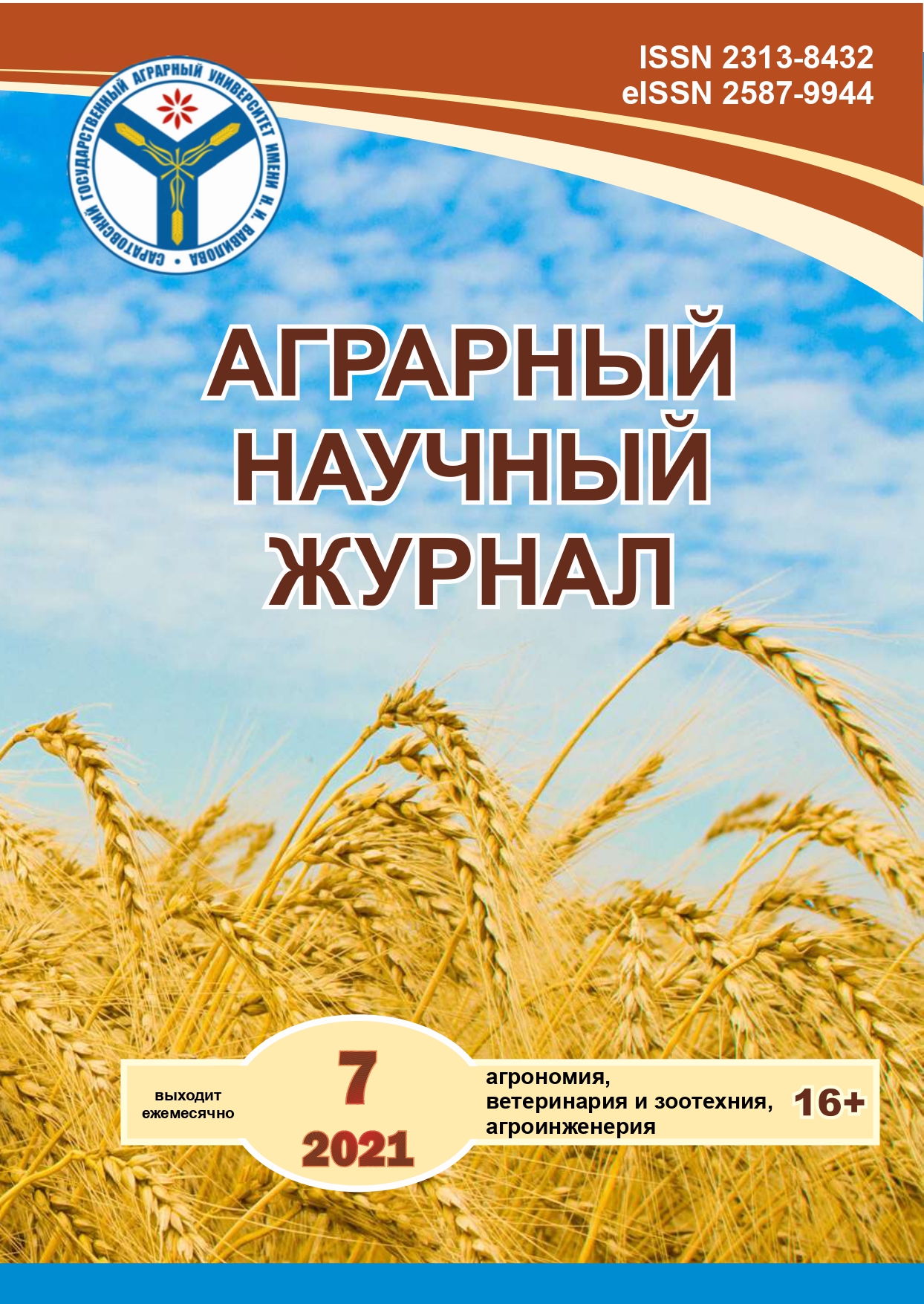Identification of the photosynthetic potential of spring oat varieties in the Lower Volga Re-gion
DOI:
https://doi.org/10.28983/asj.y2021i7pp31-34Keywords:
spring oats, varieties, photosynthetic potential, yield, Lower Volga regionAbstract
In 2017-2019, in the agro-climatic conditions of the Lower Volga region, the experience of studying spring oat varieties of different ecological and geographical origin from the world collection of VIR was laid, in order to determine their photosynthetic potential, and to identify varieties with high photosynthetic productivity. Over the years of research, the most adapted varieties of this crop were selected, their photosynthetic potential was determined, and the intensity of photosynthesis during the reproductive period of development (during the main growth phases) of spring oats in the conditions of the Lower Volga region was analyzed. On average, for 3 years of studying the collection varieties of spring oats in terms of the net productivity of photosynthesis, samples were noted: Myrtle, Athlete, Urs guara, Urs penca, p. 1. 3326 It was determined that with the growth of (FP) and (BPF), the yield of oats also increased. Since this indicator directly depends on the physiological and bioclimatic processes occurring in plants during ontogenesis. In the highest yield in 2017, it varied from 0.66 to 2.01 / ha. In 2018, the minimum yield values for all varieties were obtained from 0.51 t / ha of the Dookie 10 variety to 1.78 t / ha of the Mir variety. In the conditions of 2019, the yield variability by variety was from 0.60 t / ha to 1.94 t / ha. Thus, out of the 8 studied varieties, 5 were identified - p.1. 3326, Guara Urs, Urs foam, Athlete, Myrtle, as highly productive, and therefore the most resistant to abiotic stresses of the conditions of the Lower Volga region.
Downloads
References
Доспехов Б.А. Методика полевого опыта с основами статистической обработки результатов исследований. – М.: Колос,1979. – 416 с.
Земельные и агроклиматические ресурсы аридных территорий России / В.П. Зволинский [и др.]. – М.: Изд-во ПАИМС, 1998. – С. 56
Кельчевская Л.С. Методы обработки наблюдений в агроклиматологии // М.:Гидрометиоиздат, 1971. – 215 с.
Методика Государственного сортоиспытания с.-х. культур. – М., 2015. – 239 с.
Методика определения структуры урожая и качества зерна. -М., 1989. – 39 с.
Ничипорович А.А. Фотосинтез и вопросы интенсификации сельского хозяйства. – М.: Наука, 1965. – 46 с.
Овес растениеводство. – 2016. – Режим доступа: universityagro.ru>растениеводство /овес/ (дата обращения:07.01.2021).
Почва: состав и свойства почвы. – 2018 – Режим доступа: nsportal.ru›sites…files/2018/12/13…i_svoystva… (дата обращения: 08.01.2021).
Прокина Л.П., Хвостов Е.Н. Влияние минеральных удобрений и приемов обработки почвы на урожайность овса // Аграрный научный журнал. – 2019. – № 12. – С. 30–33.
Сельское хозяйство Астраханской области. – 2015. – Режим доступа: ab-centre.ru›page/selskoe-hozyaystvo…oblasti (дата обращения: 11.01.2021).
Селянинов Г.Т. Требование пшеницы к климату // Труды по прикл. ботанике, генетике и селекции. – Л., 1960. – Т. 32. – Вып.2. – С. 183–198.
Урожайность овса в России с 1990 по 2018 гг. – Режим доступа: http://www.gks.ru (дата обращения: 10.01.2021).
Федорова В.А., Наумова Н.А., Ячменева Е.В. Оценка адаптационных возможностей сортообразцов яровых зерновых культур в аридных условиях Астраханской области//Аграрный научный журнал, – 2019. – № 9. – С. 25–30.
Физиологические основы устойчивости растений. – 2020. – Режим доступа: vseobiology.ru>fiziologiya-rastenii…ustoichivosti…(дата обращения:08.01.2021).
Downloads
Published
Issue
Section
License
Copyright (c) 2021 The Agrarian Scientific Journal

This work is licensed under a Creative Commons Attribution-NonCommercial 4.0 International License.








